ARDMS AB-Abdomen Abdomen Sonography Examination Exam Practice Test
Abdomen Sonography Examination Questions and Answers
Which of the following would optimize visualization of a bladder mass?
Which vascular condition is most commonly associated with a wandering spleen?
What is the most common cause of nutcracker syndrome?
Which vessel is indicated by the arrow on this image?
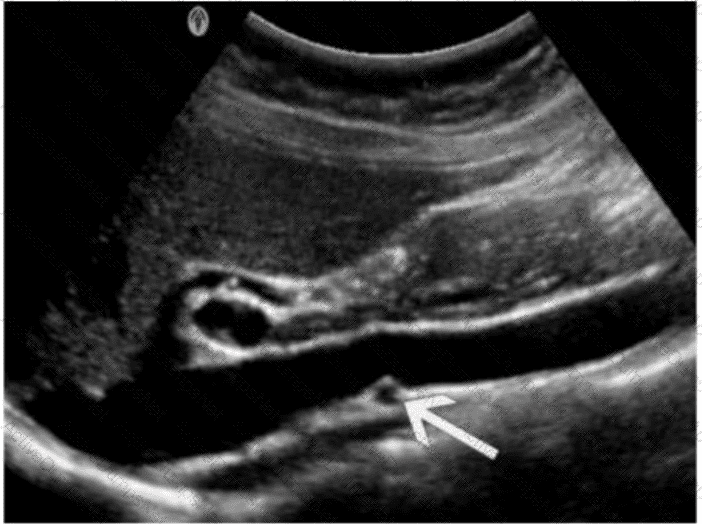
Which condition presents sonographically as an anechoic mass between the umbilicus and the bladder?
Which sonographic finding is commonly associated with transitional cell cancer of urinary bladder?
Which clinical finding is most likely associated with the pathology in this image?
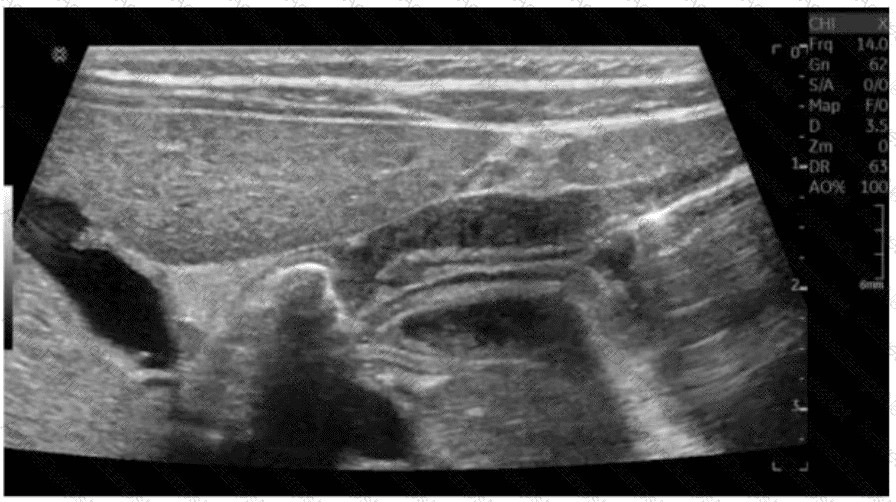
Which sonographic appearance of the bile ducts is demonstrated in this image?
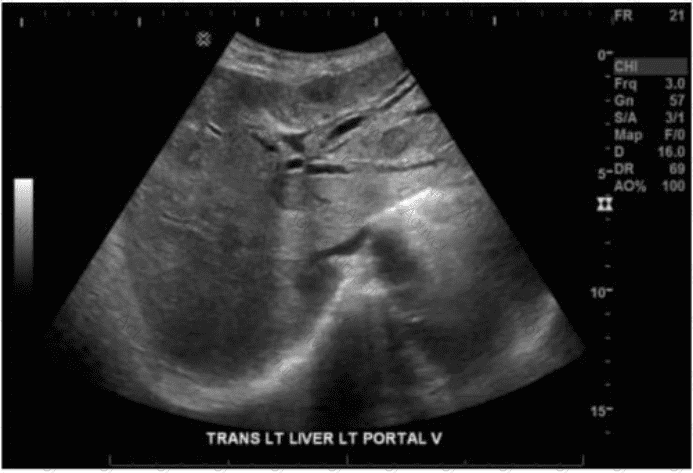
Which portion of the biliary system is last to become dilated with biliary obstruction at the ampulla of Vater?
Which organ is held in place by the lienorenal, gastrosplenic, and phrenocolic ligaments?
Which portion of the renal arterial vasculature is indicated by the arrow in this image?
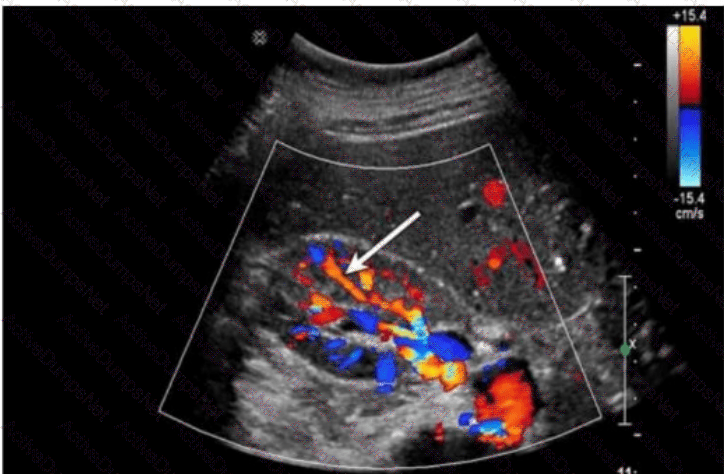
A 60-year-old man presents to the emergency room, complaining of tearing pain in the chest and abdomen. Blood pressure readings from the two arms show a difference of more than 20 mm. Which ultrasound finding is most likely associated with this presentation?
Which technique would best eliminate the spectral Doppler artifact in this image?
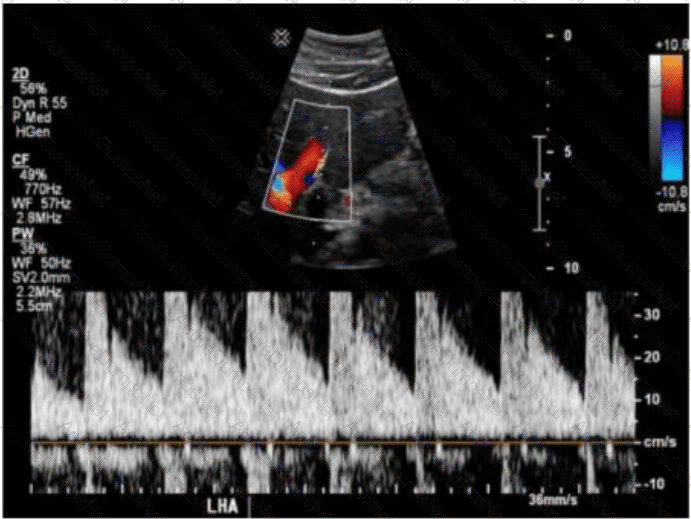
Which thyroid condition is most likely caused by a viral infection?
Which laboratory value stays elevated longest and is considered the most reliable in diagnosing pancreatitis?
Based on this image, which congenital anomaly should be suspected?
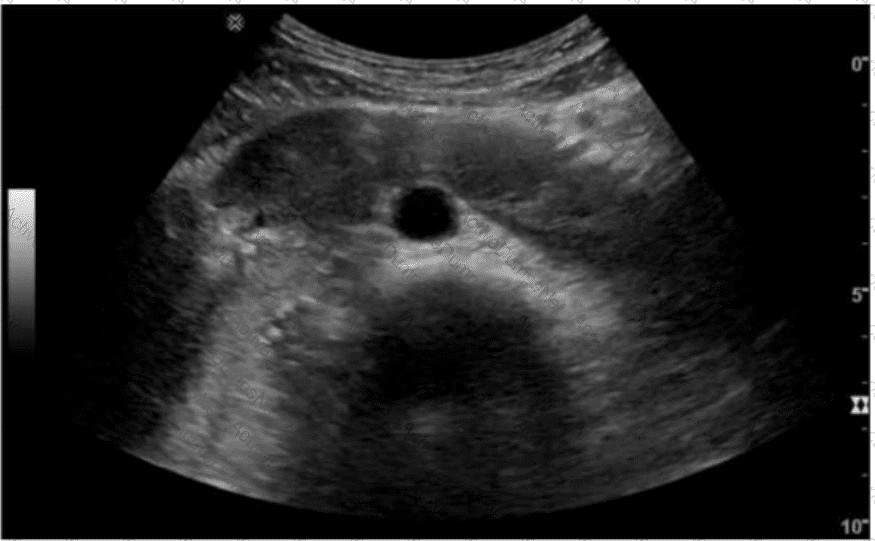
Which sections of the liver are divided by the structure indicated by the arrow on this image?
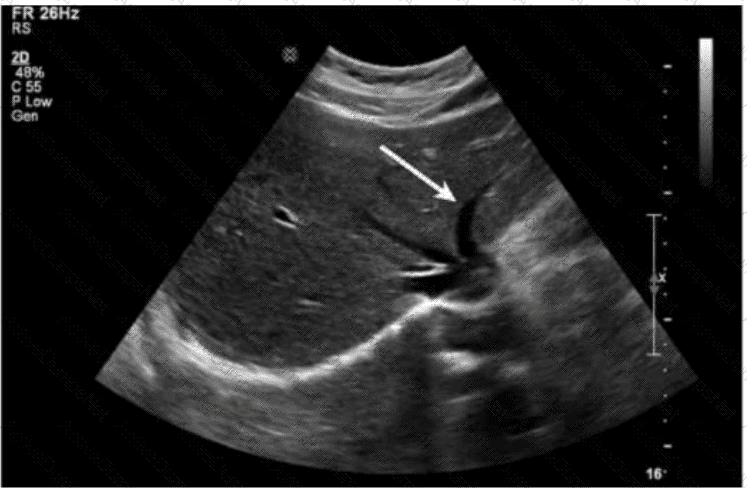
Which renal condition is commonly associated with pyuria and leukocytosis?
Which parameter is most likely increased distal to a renal artery stenosis?
Which sonographic finding is associated with normal postprocedural Doppler of a transjugular intrahepatic portosystemic shunt (TIPS)?
What is the main purpose for performing focused abdominal sonography for trauma (FAST) exams?
Which measurement is the upper limit for a normal gallbladder wall?
Which condition is most consistent with thinning of the renal cortex, reduction in renal length, and prominence of the renal sinus fat in a patient presenting four months after renal transplant with slightly reduced renal function?
Where is the most common location for a branchial cyst in relation to the thyroid?
Which sonographic finding is most consistent with this image of the abdominal aorta?
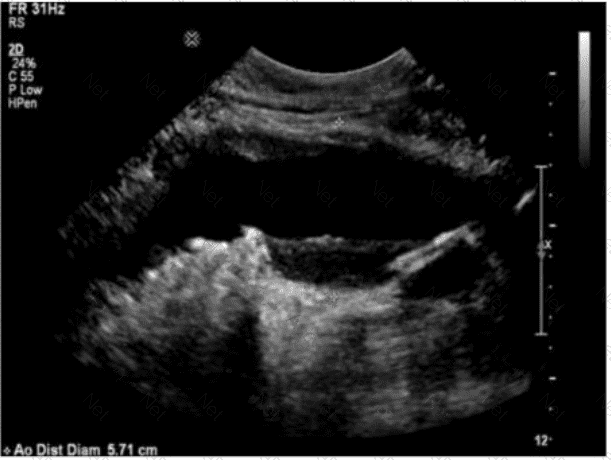
Which sonographic finding indicates the need for immediate surgical intervention following testicular trauma?
Which lymph node shape is concerning for malignancy in the post-thyroidectomy neck?
Which complication would be associated with retroperitoneal fibrosis?
Which renal anomaly is demonstrated on this image?
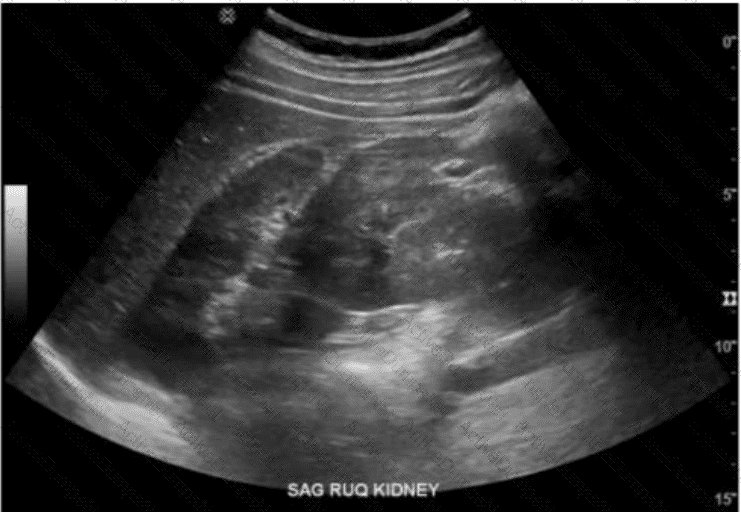
Which condition is demonstrated in this image?
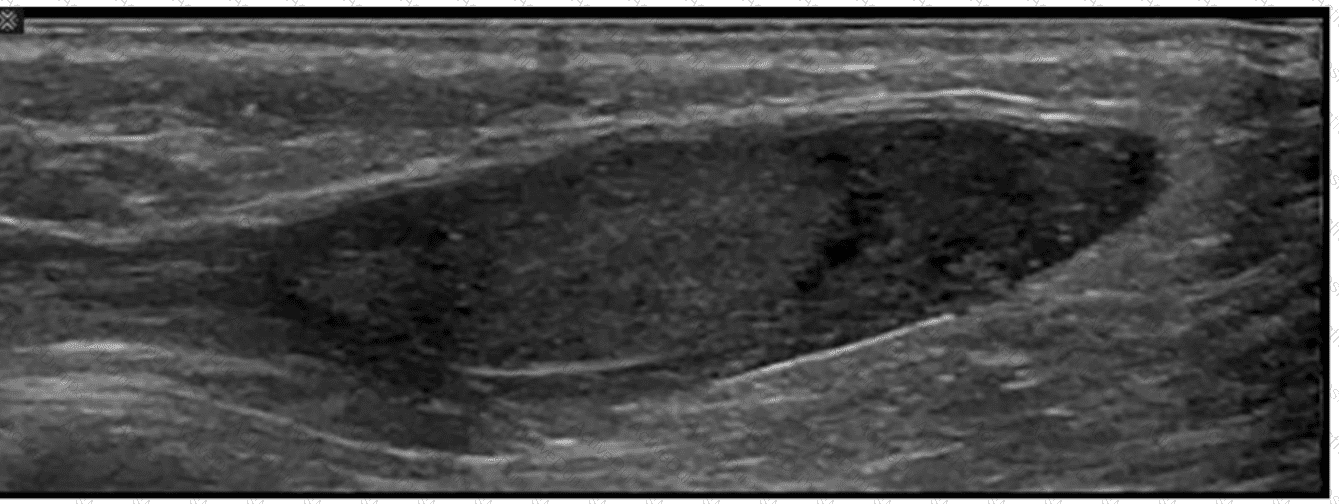
Which of the following is a possible early complication of a renal transplant?
Which clinical finding is most likely associated with the splenic pathology demonstrated in this image?
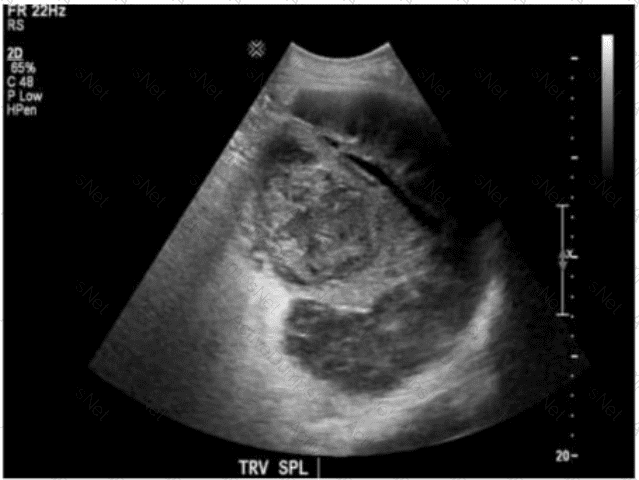
Which scanning technique would best reduce reverberation artifact when assessing the gallbladder?
Which of the following must be sterile for a percutaneous procedure?
Which condition is most likely to develop after splenic trauma?
A patient presents with ampulla of Vater obstruction, distention of the gallbladder, and painless jaundice. Which condition is most likely associated with these findings?
Which vessel is typically seen with an echogenic ring of fat when imaging the upper abdominal mesenteric circulation?
A patient presents with right lower quadrant pain and fever. Which condition is most likely indicated by the arrow on this image?

Which neoplasm is a benign tumor of the spleen?
Which finding is an indication for renal biopsy to assess for renal failure?
Which type of hernia is located medial to the inferior epigastric artery?
How are portal veins differentiated from hepatic veins?
Which of the following is the most common symptom of cholelithiasis?
In which segment is the solid mass located in this transverse image of the liver?

Which finding is demonstrated in this image?
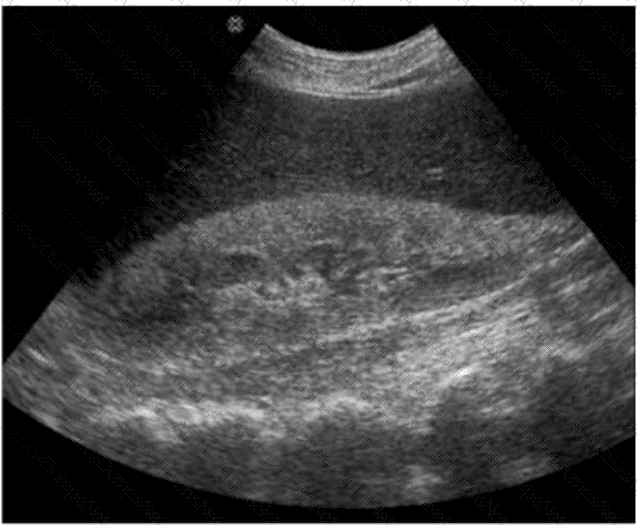
Which liver neoplasm is associated with use of oral contraceptives and is most often seen in women under the age of 40?
In which position should a patient be placed when internal echoes are seen within a fluid-filled bladder?
Where in the neck are most thyroid cancer recurrences found?
Identify the congenital anomaly.
Using your mouse, place the cursor on the appropriate region of the image and then left-click the mouse button to indicate your selection.
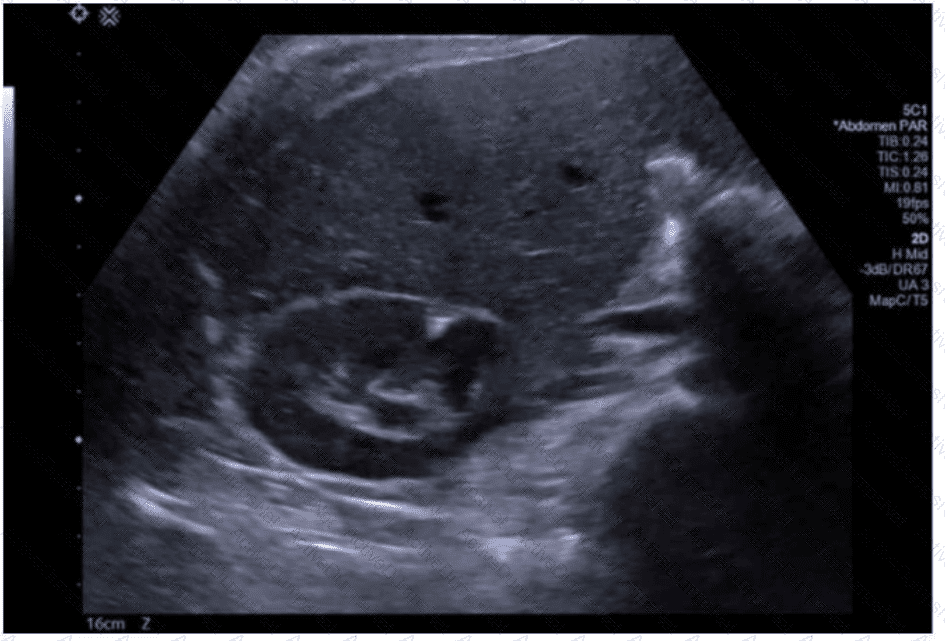


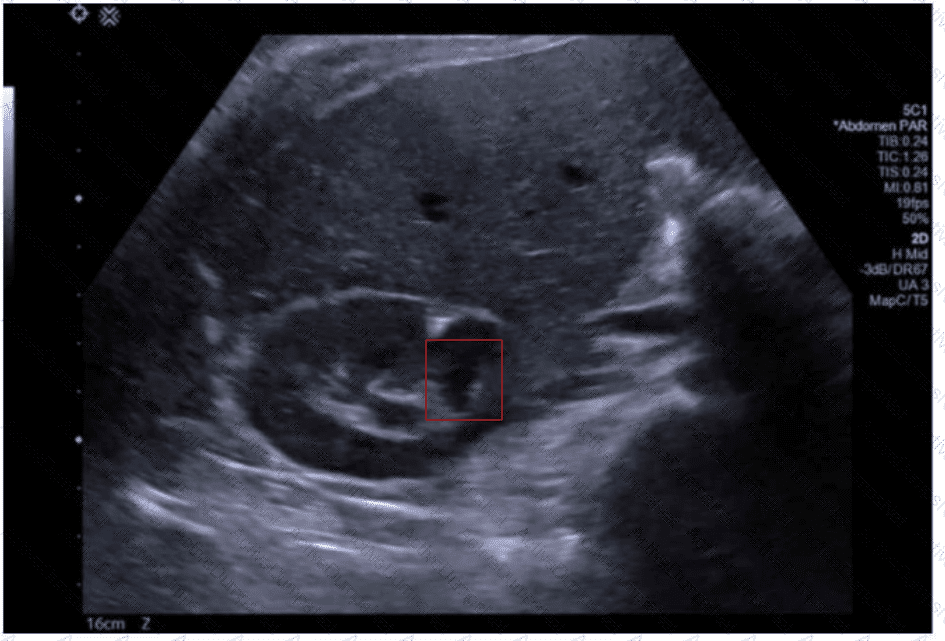 An ultrasound of a fetus
AI-generated content may be incorrect.
An ultrasound of a fetus
AI-generated content may be incorrect.